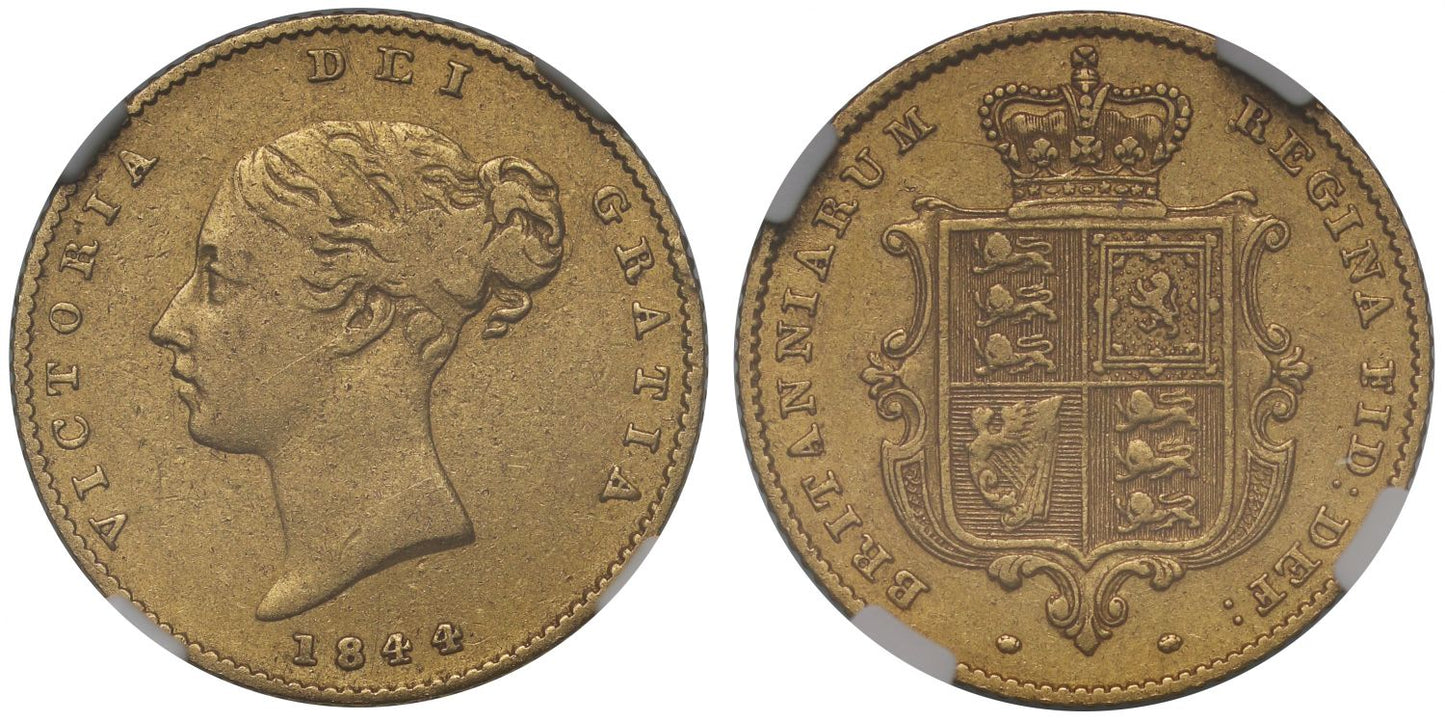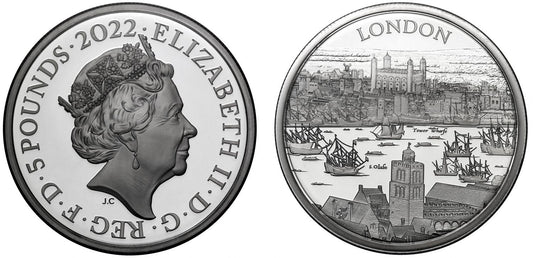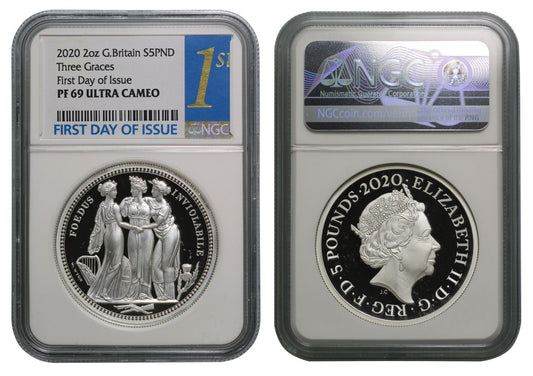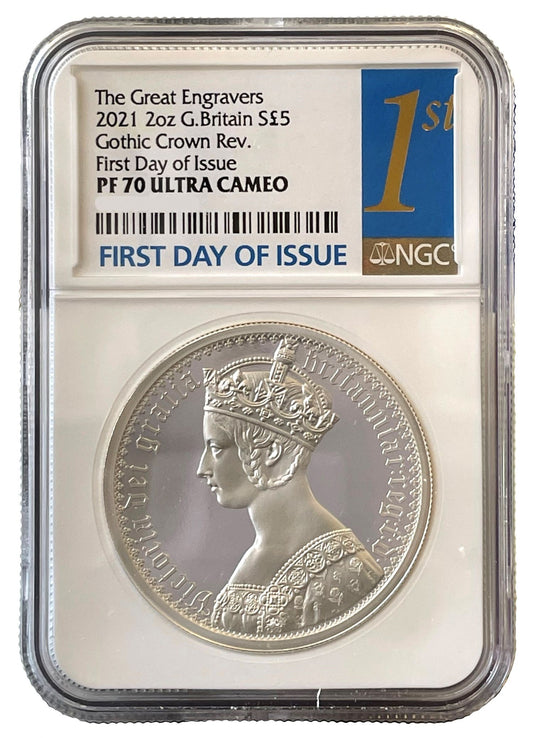FAQs
What makes a coin valuable?
I have coins to sell, what’s the next step?
How will my purchases be shipped?
What happens if I’m not entirely happy with my purchase?
Victoria 1844 Half-Sovereign from the Schiehallion wreck Isle of Wight 1879
Victoria (1837-1901), gold Half Sovereign, 1844, Schiehallion shipwreck, first young head left, type A1, date below, VICTORIA DEI GRATIA, toothed border around rim both sides, rev. crowned quartered shield of arms in frame, BRITANNIARUM REX FID: DEF: weight 3.95g (Hill 418; S.3859). Very fine with natural corrosion, ex Schiehallion shipwreck piece, graded by NGC as VF details from saltwater damage.
NGC Shipwreck Certification 5969527-002 from the Schiehallion shipwreck sank 13th January 1879, sold through Daniel Frank Sedwick.
Calendar year Mintage 1,127,007.
The Latin legends translates on obverse as "Victoria by the Grace of God," and on the reverse as "Queen of the Britons, Defender of the Faith".
The iron-hulled barque Schiehallion was launched on the 2nd of December 1869 in Dundee by the shipbuilders Simpson & Co. With a beam of just 8.6m, and a length of 52m, she was by no means a large vessel. Destined for a life of trading between the United Kingdom and New Zealand, the Schiehallion was en route back to London from Auckland on the 13th January 1879 when it ran aground off the cost of the Isle of Wight in thick fog. Thankfully all but two of the original 29 passengers survived the wreck. The news was less good for the cargo, which included over 700 tons of gum, tallow, wool, cotton, cotton seed, silver plate, jewellery, nuts, oil, copra, and manganese. Also on board was a small number of gold Sovereigns and Half Sovereigns for the purpose of trade and exchange along the Schiehallion journey back to London.
The wreck is perhaps most famous for the act of bravery of one of the crew members, David Moore, who swam almost a mile from the wreck to the coast in extremely cold and dangerous conditions. Once on dry land, Moore pulled the two lifeboats ashore using a length of rope he'd tied around his leg during the swim. Despite this tremendous act of bravery, Moore remained a modest man, and eventually took a job in Auckland. He was nevertheless tracked down by the Royal Humane Society and awarded their Bronze Medal for bravery. He received the medal at the Theatre Royal in London on the 15th of October 1879. In addition to this, Moore was made 'New Zealander of the Year' by the Auckland Herald - the article of which is accessible online. Whilst Moore's medal is now in a museum, these Half Sovereigns offer the ability to own a piece of maritime history.
Provenance:
Daniel Frank Sedwick, Treasure Auction 26, 1st November 2019, lot 305.
FAQs
What makes a coin valuable?
I have coins to sell, what’s the next step?
How will my purchases be shipped?
What happens if I’m not entirely happy with my purchase?













